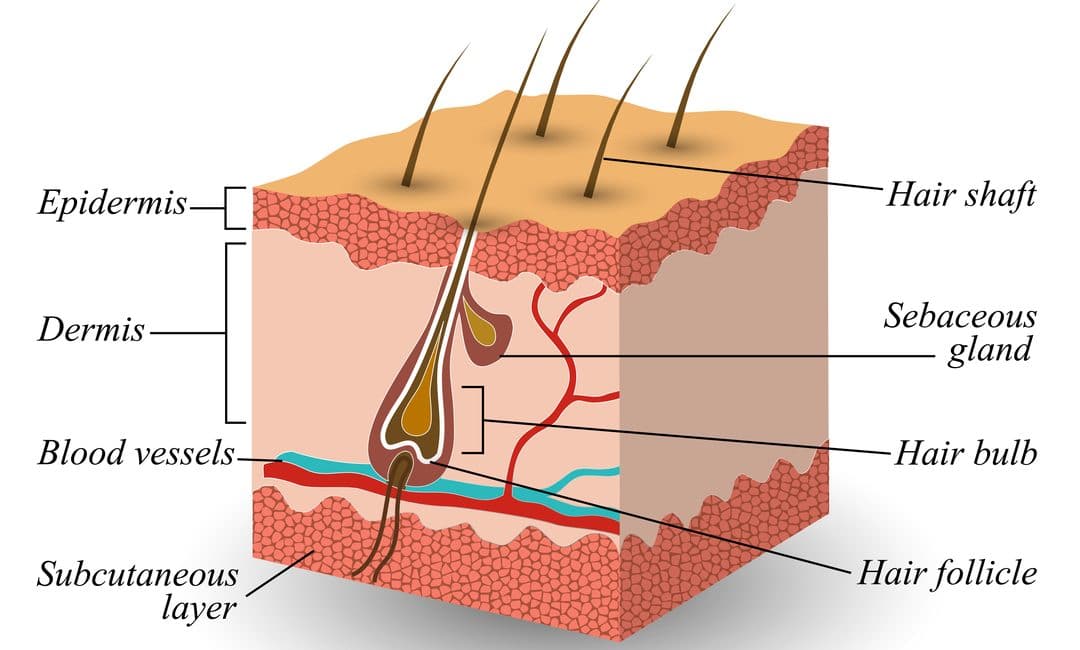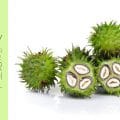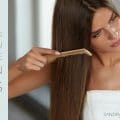Hair growth cycle: understanding the science of hair

Hair growth cycle: the Science of hair & understanding how your hair grows
If you want to improve or regrow your hair, it is important to comprehend the science of hair and have some understanding of the hair growth cycle.
Find out all you need to know about hair growth right here!
HELP! What is going on with my hair growth cycle?
IF YOU’RE EXPERIENCING HAIR LOSS, THEN YOU’VE COME TO THE RIGHT PLACE.
Hair loss is a common condition, but it can be devastating for the person suffering from it. Unexplained hair loss, hair thinning and other hair problems are very distressing. Not only does it affect your appearance, but it can also have a severe impact on your social life, your sexuality and your emotional and psychological well-being. Losing hair is heartbreaking, at least that’s how it felt to me.
To better understand how and why hair loss occurs and how it can be prevented, we need to learn about the science of hair, the hair loss causes, nutrition and the hair growth cyle.
The science of hair: how is hair formed?
A mountain of research has gone into hair, how it grows, and what it’s made up of. On average, we have around one million follicles. These follicles are produced before we are born, around week 22 in the uterus. The number of follicles created will remain the same for the rest of our life. After birth, our bodies stop producing these follicles.
How Does Hair Grow; discover the hair growth cycle
Hair is not growing continuously but in cycles. These growth cycles are known as anagen, catagen, and telogen. At the end of the telogen phase, your hair falls from the body. It grows at a rate of around 6 inches a year.
Let us look at the hair growth cycle below so that you can get a better understanding of the science of hair and how it grows.
Anagen hair growth cycle
The beginning of hair growth starts with cell division. This is a quick process, which results in hair beginning to move up and out of the hair follicle. The hair on your head can be in the anagen phase for as long as two to six years. The anagen phase is where the most active growth takes place. Some people struggle to grow long hair due to a natural, short anagen phase. In contrast, people that grow extremely long hair have a long anagen phase.
Catagen hair growth cycle
Your hair experiences a transition in the catagen phase. It is a short period that lasts at the most for three weeks. At this stage, your hair stops growing and becomes attached to the root. Three percent of your hair can be in the catagen stage at any moment in time.
Telogen hair growth cycle
Hair forms fully in the telogen phase. You could say that the hair follicle is in a resting stage. Your hair is in the telogen stage for approximately one hundred days. You shed at most one hundred telogen hairs per day, which is fine. In a crisis, the follicles may stop producing hair cells and stay in the telogen phase forever.
Understanding the science of hair and the hair growth cycle
What are hair follicles and how do they influence the hair growth cycle
Just beneath the surface of your skin are the hair follicles. This is where hair growth takes place, at the roots. There is a bulb at the bottom of the root, called derma papilla, which plays the important role of sopping up vital nutrients. It uses that nutrition to develop new cells and to keep the hair growing.
Hair that is visible above the skin is known as the “hair strand”. Below the surface, cells in the hair bulb divide at an extremely rapid rate. They are the fastest dividing cells in your body, splitting every twenty-three to seventy-two hours.
Two sheaths surround hair follicles. There is an inner sheath and an outer sheath. The inner sheath begins at the sebaceous gland. This gland produces sebum oils that ultimately extend to the ends of the strands of your hair. Sebum oil conditions your hair.
The number of sebum oil changes throughout the lifespan. As a child, you produce small amounts of sebum. Post-puberty, sebum secretion increases. Then finally as you age, it lessens. This is particularly an issue for older women, who suffer from a higher reduction in sebum production than older men.
The hair closest to your scalp is the newest hair on your head. As your hair grows, older sections of hair are pushed out little by little.
The Hair Shaft – the strands visible on top of our scalp
Let’s explore your hair shaft. It has three layers of keratin, a tough protein. The outer layer of your hair is called the cuticle. The next layer is called the cortex, and the innermost layer is called the medulla. The cortex is the thickest layer of all three. It is the cortex, along with the medulla that gives your hair its colour. In fact, a medulla is often absent from hair that is fine and naturally blonde.
Keratinization of hair
Your hair is made up of a tough protein called keratin. This protein forms as your hair goes through its early phases of development. Proteins fill the cells of the hair, replacing the nucleus. As it breaks the surface of the skin, the hair is made up of keratin.
Hair growth cycle and how Proteins Affect Hair
I’ve extensively researched into hair, how it grows and what it’s made up of, to give you the best information possible to care for your hair.
91 percent of your hair is amino acids; also, called proteins. These proteins contain carbon, hydrogen, nitrogen, oxygen and sulphur, which incidentally are the basis of your nails and skin as well. Amino acids thrive in the cortex layer of your hair, and they form long chains that are joined by peptide bonds. The name for very long peptide bond chains is polypeptide chains.
The science of hair: Proteins are the building blocks of long, luscious and strong hair.
We all want to know the secret to growing our hair so that it’s fuller and stronger. Hair needs proteins to grow stronger and longer. One of my favourite healthy foods is bone broth. It’s full of healthy gelatine, protein and minerals and the body absorbs it easily.
You can read more about bone broth here.
As much as it is important to eat healthily, you are not necessarily what you eat – but you are what you absorb. You can read more about this and digestive enzymes and HCL here.
Apart from ingesting proteins, we can also help our hair from the outside by adding more proteins. You can add proteins to hair through certain oils, Henna, Tea Rinsing, etc. But remember, too much of a good thing, can have a harmful effect. As important as it is to treat your hair with proteins, it’s also important to not overfeed it with proteins, as it can break off. For example, coconut oil can do this, as it contains a lot of proteins and henna contains a lot of proteins too. So, for certain hair types, especially fine hair, this overdose of protein can end up being too much and break your hair instead of nurturing it. Rotating fatty acids and proteins is important.
Hair growth cycle and how styling can affect your hair
Polypeptide chains are long, and they are made thick due to side bonds. Your hair has three types of side bonds: disulphide bonds, hydrogen bonds and salt bonds. Hair has more salt and hydrogen bonds than anything else. These bonds are weaker than disulphide bonds. It’s this weakness that allows us to style our hair with heat.
Your curling irons, flat irons, and wet rollers take advantage of the weaker salt and hydrogen side bonds. This process makes it possible to change the degree of curliness of your hair. Your hair contains fewer disulphide bonds, which are the strongest side bonds in the hair. When you hear of people getting permanents (perms) or relaxers, they are going through a process that breaks (and reforms) the disulphide bonds in the hair.
Holistic solutions to regrow hair, clean living and optimal health
If you would like to discover more natural and holistic solutions to regrow hair ensure to check out the regrow hair solutions page.
Or to discover more information about cleaning living and holistic lifestyle, explore my optimal health page.
Check out the best essential oils to regrow stronger and thicker hair page
Empowering others via my anti-ageing wellness platform and holistic health books
I hope you liked this page about the hair grwoth cycle and the science of hair. If you would like to learn more about my tips and tricks on how to live a toxin-free lifestyle or how I saved my hair from falling ensure to check out other pages of this anti-ageing wellness platform.
Or if you want to discover my no BS guides on how to regain your health, hair and life, ensure to check out my holistic anti-ageing wellness books
After a frustrating decade of battling several chronic illnesses, I became disillusioned with the medical system and decided to take my health into my own hands.
Now, through my books and wellness platform, I want to empower people around the world do the same and regain their health, hair, life and beauty!
Let me help you right now!
Receive YOUR Welcome Kit that includes a wide range of topics, from simple and easy healthy brain recipes to clean living, ditching toxic chemicals with loads of practical advice that you can implement immediately
.
References & Resources
http://growhairguru.com/what-is-hair-made-of/
http://www.hairfinder.com/hairquestions/hairgrowth.htm
http://www.webmd.com/skin-problems-and-treatments/picture-of-the-hair#1
Kunda, Lila. The Ayurveda Hair Loss Cure: Preventing Hair Loss and Reversing Healthy Hair Growth For Life Through Proven Ayurvedic Remedies (Ayurveda Medicine, Hair … Diet, Hair Loss Diet, Hair Loss Solutions)




